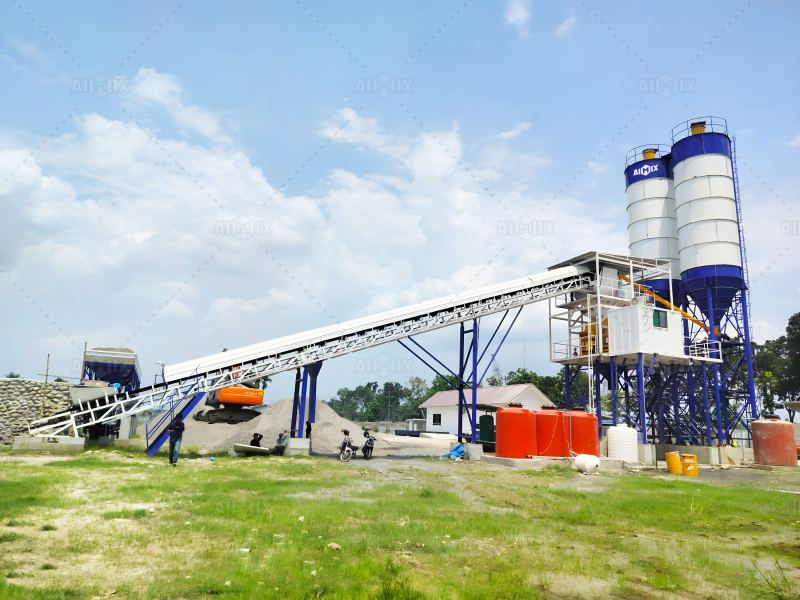How Different Types of Ready Mix Concrete Plant Affect Project Timeline and Quality
- aimixglobal5
- Sep 22, 2025
- 4 min read
The efficiency and quality of a construction project largely depend on the choice of concrete batching and mixing equipment. Ready mix concrete plants play a crucial role in delivering consistent, high-quality concrete to meet project demands. Different types of ready mix concrete plants—stationary, mobile, wet mix, and dry mix—affect not only the project timeline but also the quality of the final concrete product. Understanding these differences helps contractors optimize operations, control costs, and achieve project goals efficiently.

Overview of Ready Mix Concrete Plants
A ready mix concrete plant is designed to produce concrete in precise proportions and deliver it to construction sites in a timely manner. These plants can be categorized by mobility, mixing method, and capacity, with each type offering distinct advantages and limitations.
Stationary Ready Mix Concrete Plant: Installed at a fixed location, ideal for large-scale projects with a consistent supply of aggregates and cement.
Mobile Ready Mix Concrete Plant: Compact and transportable, suitable for projects at multiple locations or urban sites with limited space.
Wet Mix Plant: Mixes water and aggregates at the plant before transportation. Provides consistent and high-quality concrete.
Dry Mix Plant: Aggregates and cement are mixed dry and water is added at the site. Offers lower initial cost but may require additional handling.
Stationary vs. Mobile Plants: Impact on Project Timeline
Stationary ready mix concrete plants are optimized for large, centralized projects like highways, bridges, and industrial facilities. Their large capacity allows continuous concrete production, reducing downtime and ensuring a steady supply. However, transporting concrete from a stationary plant to distant sites can introduce delays if traffic, distance, or logistics are not carefully managed.
Mobile ready mix concrete plants, on the other hand, are designed for flexibility. They can be relocated quickly to construction sites, minimizing transportation time. For projects in urban areas, multiple small sites, or temporary works, mobile plants reduce waiting times and allow for just-in-time concrete delivery, shortening the overall project timeline.
Wet Mix vs. Dry Mix: Influence on Concrete Quality
The type of mix used directly affects concrete quality.
Wet Mix Plants: Because water is thoroughly mixed with aggregates and cement at the plant, wet mix concrete ensures uniform consistency and workability. This results in higher quality concrete with reduced risk of segregation, honeycombing, or uneven curing. Wet mix plants are ideal for projects requiring structural integrity, such as high-rise buildings or bridges.
Dry Mix Plants: Water is added at the site, which can lead to variations in water-cement ratio. While dry mix plants reduce ready mix concrete plant cost and simplify logistics, inconsistent mixing may affect strength, durability, and surface finish. For minor civil works, pavements, or non-critical structures, dry mix plants offer cost efficiency without significant compromise on quality.

Capacity Considerations and Production Efficiency
Plant capacity is another crucial factor impacting project timelines. A high-capacity ready mix concrete plant can deliver larger volumes per hour, reducing the number of trips and overall labor required. Small or under-capacity plants may lead to delays, especially for large-scale projects.
When evaluating ready mix concrete plant cost, consider not only the initial investment but also operational efficiency. A plant that produces consistent concrete faster can reduce labor costs, minimize downtime, and accelerate project completion, providing better ROI in the long term.
Cost Implications
The choice between stationary, mobile, wet, or dry mix plants significantly influences both capital expenditure and operational costs.
Stationary Wet Mix Plants: Higher initial cost due to installation, high-capacity mixers, and aggregate handling systems. However, they deliver consistent quality and high output, which can reduce rework and overall project expenses.
Mobile Dry Mix Plants: Lower ready mix concrete plant cost and quick deployment. While they save money upfront, potential quality variations may lead to extra labor or material costs if adjustments are needed on-site.
Contractors must balance plant cost, concrete quality, and project timeline when choosing the right plant type.
Maintenance and Reliability
A plant’s reliability affects both project timeline and quality. Wet mix plants generally require more maintenance due to water and chemical interaction with mixers, but their consistent output often justifies the investment. Mobile plants, being modular and transportable, may have lower maintenance costs but need proper calibration after relocation to maintain quality.
Regular maintenance ensures consistent concrete mix quality, avoids unexpected downtime, and keeps projects on schedule. Choosing a plant with accessible spare parts and robust after-sales support is essential for both stationary and mobile types.
Smart Controls and Automation
Modern ready mix concrete plants incorporate digital controls, automated batching, and sensor monitoring, which improve accuracy and consistency. Automation reduces human error in weighing and mixing, ensuring that each batch meets design specifications.
For both stationary and mobile plants, automated systems speed up production, reduce waste, and enhance concrete quality. While these features may slightly increase the ready mix concrete plant cost, they contribute to significant savings in project execution time and reduce rework expenses.

Conclusion
Different types of ready mix concrete plant significantly influence project timelines and concrete quality. Stationary wet mix plants are ideal for large-scale, high-quality projects, offering high output and consistent results but with higher initial cost. Mobile and dry mix plants provide flexibility, lower capital investment, and faster deployment, making them suitable for smaller or urban projects, though they may require careful handling to maintain quality.
When selecting a plant, contractors should consider project size, concrete quality requirements, site conditions, and the balance between ready mix concrete plant cost and operational efficiency. Proper selection ensures that construction projects stay on schedule, reduce rework, and deliver durable, high-quality concrete.







Comments